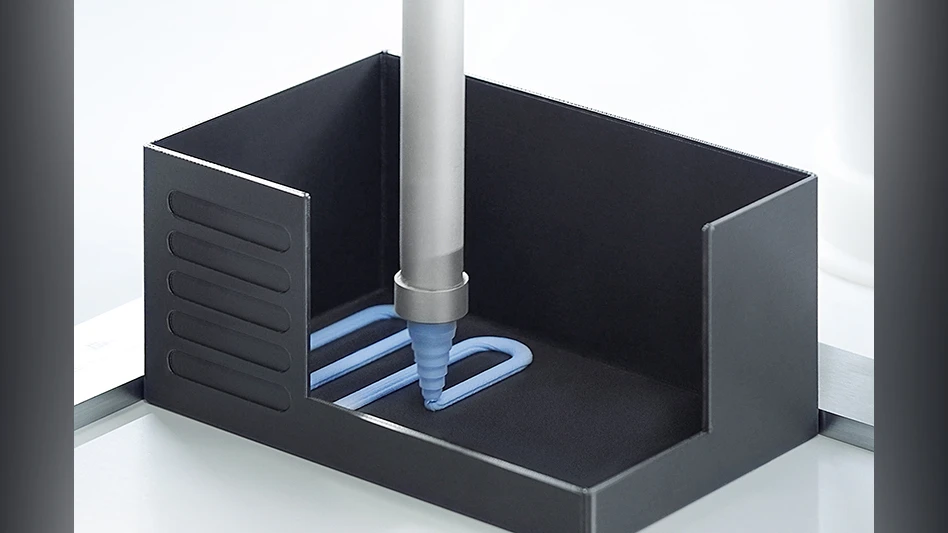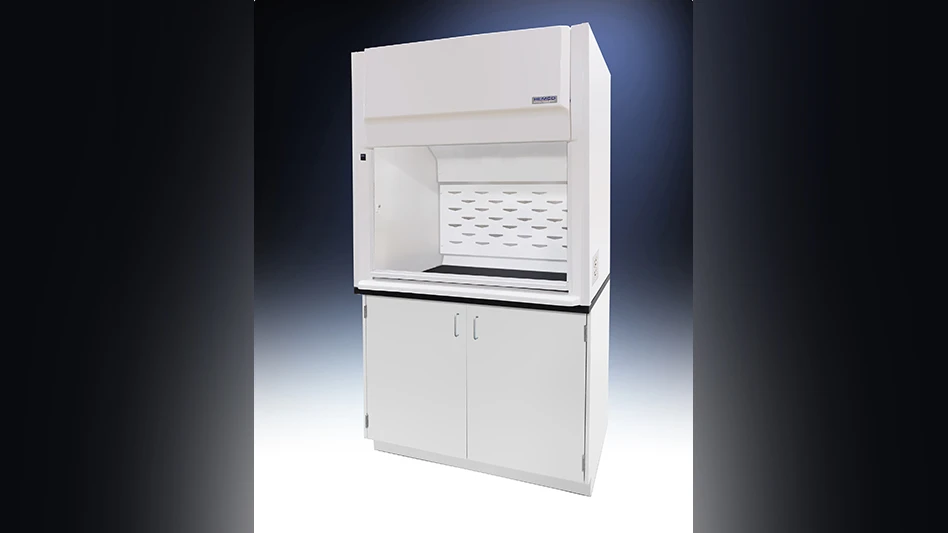
While additive manufacturing (AM) equipment has become increasingly sophisticated, software needed to design such innovative, high-performance parts has lagged. Geometry data must be delivered in sliceable format that directs the execution of the individual layers being printed. The common workaround method – transferring a CAD design into a universal STL file that directs the printing process – can be a struggle.
Surface-based, 3D-CAD software was originally developed for more traditional subtractive manufacturing methods, which were never expected to handle complex geometries associated with intricate lattices or topology optimized designs. Therefore, data deterioration and file-format conflicts can arise when exporting traditional CAD designs to the additive production environment – and the consequences are often only visible in the final printed part. At that point, extensive redesign work, machine-setting adjustments, and repeat print runs add time and expense to the process.

As an alternative, computational modeling allows a user to mathematically represent the full volume of an object being designed. Software such as nTopology’s nTop Platform uses computational modeling to provide a unified engineering environment for design, simulation, and advanced manufacturing processes. Computational modeling algorithms dramatically reduce CAD-file size and decrease run times. Software virtually considers temperature, pressure, and stress to support extremely rapid product development and iteration of highly complex designs with topology optimization and complex lattice fill.
Engineers can simultaneously consider geometry, performance, and manufacturing when designing a product and quickly create lightweight, topology-optimized parts with functional requirements built in. Examples include rocket nozzles with internal cooling channels, monocoque satellite buses lightweighted via complex internal gyroid structures, and heat exchangers for engines and avionics with vastly increased internal surface areas.
The software quickly proves-out design changes virtually, stores product-design history for quick review and re-iteration, and generates geometries that provide near-term reduction in manufacturing costs and improve product life cycle times. Recently developed industry-specific, reusable workflows can communicate the results of post-production testing and scanning back into redesign.
Moving data from software to hardware

Advanced software can output finished product data directly to advanced manufacturing equipment. AM produces the already-sliced data that can be read directly by 3D printing equipment without STL files. AM equipment manufacturers are fine-tuning their machines to accept this data for product development and production process speed-up. nTopology has been partnering with major AM-machine makers to advance the software, including EOS, Renishaw, and Velo3D.
“We’re now seeing parts built perfectly the first time; any complexity our software can create is now printable,” says Brad Rothenberg, founder and CEO of nTopology. “To me this is a very exciting time for additive manufacturing.”

Printing design complexity
Velo3D’s Sapphire metal 3D printer offers extreme quality control, and has gained popularity among aerospace customers. The Boom Supersonic jet, for example, contains Velo3D parts.
“We are currently in conversation with more than 10 other aerospace OEMs to identify high-business impact parts that can be manufactured with our system,” says Benny Buller, founder and CEO of Velo3D.
Buller and his team’s early design work on the Sapphire machine focused on the build chamber in which the lasers melt successive layers of powdered metal.
“Competing metal 3D-printers allow oxygen levels of 1,000 to 5,000 parts per million (ppm) inside,” says Greg Brown, the company’s vice president of process engineering. “Our build chamber is not only pressurized but essentially leakproof, able to attain oxygen levels of 1ppm or less.”
An internal, high-speed laminar-flow system actively removes soot and other contaminants produced during the laser melting process that can interfere with the laser beam’s focus. Early in R&D, engineers discovered that the presence of oxygen and humidity within the build chamber impacted melt pool formation.
“It’s only by providing as pure an environment as possible that you get truly predictable surface tension and favorable wetting behaviors in the molten metal,” Brown says. “We also discovered that higher oxygen levels during 3D-printing cause brittleness and lack of ductility in certain materials.”
A sensor-based, closed-loop monitoring system with a white-light camera monitors the melt pool’s thermal signature and provides feedback so that laser power can be adjusted in real-time to maintain consistent temperatures. The system halts the build if it detects a problem within the laser’s optical stack. A recoater blade system, which applies each level of fresh powder across the growing workpiece, has 600µm clearance, avoiding contact with surface deviations such as bits of stuck-on material or lifting of the previous layer that can snag the blade and crash a build.

Support-free printing
Where other metal powder bed machines require scaffold-like supports to anchor part surfaces shallower than 45°, the Velo3D Sapphire can print horizontal or nearly horizontal surfaces without such structures. This support-free capability allows the manufacture of more-functional internal channels and chambers, large, horizontally oriented holes, complex lattices, honeycomb shapes, and similarly demanding part geometries that are impossible to build without supports.
Support-free printing also eliminates some, or even all, of the secondary machining needed to finish most 3D-printed parts, including anchoring workpieces to a build plate. Also, the entire chamber can now be nested with free-floating parts (hundreds of individual turbine blades, for example), with far fewer constraints on part orientation.

Validation documentation
While there is more control and accountability in 3D-printing systems, ongoing challenges remain for AM in part validation, for which official standards in aerospace are still being developed.
“The most important topic related to 3D printing for aerospace is quality assurance,” Brown says. “You need insight into the process during the entire build, over the entire volume of every print, to ensure that the process was consistent.”
This is important in a high-volume manufacturing environment producing large parts – or large quantities of parts – for aerospace original equipment manufacturers (OEMs) and Tier 1 suppliers.
Velo3D’s Assure quality-management software works with Sapphire’s onboard metrology systems and Flow software to provide pre-build system calibration, displaying real-time data on the health of each printer on the production floor, with optics and laser alignment, gas flow, consumable statuses, and powder bed quality available from a single dashboard. While the lasers are in operation, the software tracks values, build progress, system events, and machine utilization to anticipate the likelihood of a problem developing. After a build is completed, an automatically generated build report can be used as part of a certificate of compliance.
“There are so many factors related to machine health that are crucial in making certain you build a good part – and, with most systems, there’s simply no way to guarantee it before you push the print button,” Brown says. “For example, I’ve spoken to so many users of other systems who have called in a tech to align their lasers, only to find they’re out of alignment again a week later. But what if that misalignment happens during the build? Maybe it’s not enough to be noticeable, but it’s almost certainly going to impact build quality. Our system removes those variables from the AM equation.”


The most valuable deliverables to aerospace and defense from recent improvements in software and hardware – higher-performance, consolidated parts, extreme lightweighting, and serial production of certifiable parts – are allowing designers and manufacturers to be creative when imagining the aircraft of the future. They can now quickly innovate unique, complex, optimized shapes and manufacture them faster than ever before in commercial-level quantities with validated quality.

Explore the January February 2020 Issue
Check out more from this issue and find your next story to read.
Latest from Aerospace Manufacturing and Design
- 2024 Favorites: #9 Article – 5 tips for upskilling your aerospace machinists
- 2024 Favorites: #9 News – Siemens acquires Altair Engineering
- 2024 Favorites: #10 Article – How 3D-printed aviation parts can accelerate return to air
- 2024 Favorites: #10 News – Boom Supersonic completes Overture Superfactory
- OMIC R&D hosts Supporting Women in Manufacturing Day 2024
- 4D Technology's AccuFiz SWIR interferometer
- Seventh Lockheed Martin-built GPS III satellite launches
- KYOCERA AVX's CR Series high-power chip resistor





